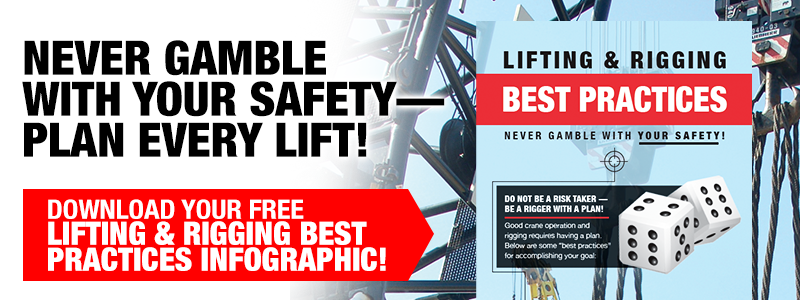Toolbox Talks: Hand Signal vs. Walkies, Pin Up/Down, Dynamic Loads, & Old Slings
Welcome to Toolbox Talks! In this episode, we’re looking at some rigging & lifting essentials and answering your lifting questions.
Here’s what rigging & lifting essentials you can expect to learn in this Toolbox Talk:
- Discover the correct way to rig your shackle to the crane hook: pin up or pin down?
- Learn about the optimal lifting height for various loads.
- Explore the communication methods between riggers and crane operators: hand signals, walkie-talkies, or verbal communication?
- Uncover the risks associated with dynamic loads, even when the load weight is significantly less than the Working Load Limit.
- Gain insights into the service life of slings: Are there any recommended or prescribed durations?
Join us as we delve into these crucial aspects of rigging and lifting and answer these rigging & lifting essential questions. Get ready to enhance your knowledge and make informed decisions.
Want to learn more? Check out these articles, videos, and FREE downloads!
FREE Downloads
- Sling Inspections E-Book: A Guide to Inspections & Applicable Standards
- Rigging Gear Inspection Field Reference
- Lifting Slings Types and Terms E-book
- Lifting & Rigging Best Practices Infographic

Articles & Videos
- What Is a Sling Angle, and How Can Knowing Them Make Our Lifts Better?
- OSHA Inspection Series: How Can Lifting & Rigging Training Help with OSHA Compliance?
- What are the ASME B30.2 Hand Signals for Overhead and Gantry Cranes?
- A Brief Rigging Glossary: Basic Industry Terms You Should Know
- Playlist – Lifting Sling Inspection Course
- Playlist – How To Perform Inspections
- Playlist – Toolbox Talks
- OSHA Inspection Series: How Important Are Rigging Inspections?
- How Much Does an OSHA/ASME Compliant Rigging Inspection Cost?
Contact Mazzella
- Schedule Remote or In-Person Rigging Training
- Contact Mazzella’s Rigging Division
In this video:
0:00 – Intro
0:21 – How to get your questions answered
0:29 – Should a shackle be rigged pin up or pin down?
1:18 – How high do you need to lift a load?
1:40 – Are hand signals required to communicate with a crane operator?
2:15 – Do Dynamic Loads create significant risk when the load weight is under the WLL?
2:27 – What is a Dynamic Load?
2:40 – What is a Shock Load?
3:04 – Four factors that contribute to catastrophic failure
4:38 – How to avoid dropping a load
5:56 – Do slings have a recommended service life?
6:38 – How can you learn more?
Disclaimer:
Any advice, graphics, images, and/or information contained herein are presented for general educational and information purposes and to increase overall safety awareness. It is not intended to be legal, medical, or other expert advice or services, and should not be used in place of consultation with appropriate industry professionals. The information herein should not be considered exhaustive and the user should seek the advice of appropriate professionals.
